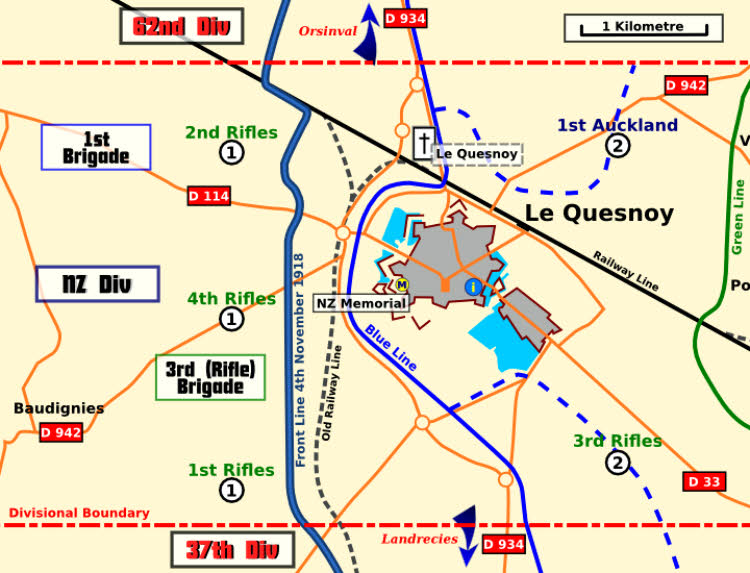
263138, Duke of Wellington’s (West Riding Regiment), 2nd/4th Battalion
Victor Walker was born on the 1st May 1897 and baptised on the 16th June 1897 at St Mark’s Church, Dewsbury, the third son of baker James Edward Walker and Mary Ellen (nee Beckett). Dewsbury born, James Edward and Flintshire born Mary Ellen married at Batley All Saints church on the 17th June 1890.
In 1901 and 1911 the family are living in Batley, latterly at 38, Halifax Road, where James Edward is a baker and confectioner. Victor, then aged 13, is working as a pawnbroker’s assistant. At some time later James Edward Walker and his family moved to Bridle Lane, Ossett.
Victor Walker’s army service record has not survived. His MIC records service numbers for Victor of 267148 in the West Yorks Regiment and 263138 in the West Riding Regiment. He was awarded the British and Victory medals, indicating he did not serve abroad before the 31st December 1915.
Private Victor Walker died on the 4th of November 1918, aged 21 years, the son of Mr. J. E. Walker, of 2, Bridle Lane, Ossett, Yorks.
The 2nd/4th Battalion of the Duke of Wellington’s (West Riding Regiment) was formed at Halifax in September 1914 as a Home Service (2nd Line) unit. They moved to Derbyshire on the 1st March 1915 and came under orders of 186th Brigade in the 62nd (2nd West Riding) Division. The battalion moved to Thoresby Park (Ollerton) in May 1915, then in October 1915 to Retford, in November 1915 to Newcastle, in January 1916 to Salisbury Plain, in June 1916 Halesworth, and in October 1916 to Bedford. They landed in France in January 1917.
Private Victor Walker died just a week before the end of WW1 in the Battle of Sambre during operations to capture the villages of Le Quesnoy and Frasnoy. Private Walker’s 186 Brigade, 62 Division were tasked with the action along with the 1st New Zealand Infantry Brigade. During the nights of the 2nd and 3rd of November 1918 then during the two days of the 3rd and 4th November 1918, 62 Division moved up from its rest area towards the start line for the advance on the 4th of November.
This was a line running north westwards from the west side of Le Quesnoy. Zero hour was at 5.30 a.m. on 4th November, when 62 Division advanced against light opposition, leapfrogging its brigades. Orsinval was taken and by the end of that day the division had progressed 7 km and reached a north – south line lying between Frasnoy and Gommegnies. Thus the first objective had been reached.
“The attack of the 186th Infantry Brigade was carried out on a one battalion front with a frontage of approximately 12,000 yards. The 2nd 4th Hampshire Regiment were to capture all the ground as far as the Blue Line (from R.12.d. along road astride the grid line between R.17. and 18). The 2/4th Duke of Wellington’s Regiment were to go through them and capture all ground as far as the Green Line (from the road just South of Frasnoy M.9.d. along road in M.15.b. to the grid line between M.15 and M.21). These two attacks of the 2/4th Hampshire Regiment and 2/4th Duke of Wellington’s Regiment were supported by artillery barrages. The 5th Duke of Wellington’s Regiment were to follow behind these two and leapfrog through them and capture the Red Line (a line from M.21.c.2.3. through M.18.a. & c. to the grid line between M.18 and M.24). This attack was to be supported by artillery, but with no barrage.
On reaching the line about grid line between M. 14. and M. 15. both companies had to extend on coming under machine-gun fire from orchards in M.15b and c. It was found that the 2nd/4th Duke of Wellington’s had not quite reached the Green Line and enemy machine guns were very troublesome in front of this line.” 1
The town of Le Quesnoy was not attacked but troops moved round the north and south to encircle it. The operations were entirely successful. Le Quesnoy was completely encircled during the morning and attempts being made to mop it up, the town was found to be strongly held and defended by machine guns firing from the ramparts.

Above: Map of Le Quesnoy on the 4th November 1918 showing the position of 62 Division and Private Victor Walker north-west of the village.
Private Clifford Walker died on the 4th November 1918 at the age of 21 years and is buried at grave reference G7 at the Villers-Pol Community Cemetery Extension, 2 Nord, France. Villers-Pol is a village and commune in the Department of the Nord, between Valenciennes and Le Quesnoy.
The Communal Cemetery Extension was made in November 1918, by the 24th, Guards and 2nd Divisions; and one grave was brought in after the Armistice from a field between Sepmeries and Villers-Pol.
There are now 119, 1914-18 war casualties commemorated in this site. Of these, 2 are unidentified. There are 74 German burials here, 39 being unidentified.
The Extension covers an area of 1,183 square metres and is enclosed by a brick curb.
References:
1. 5th Battalion, Duke of Wellington’s (West Riding Regiment) War Diary